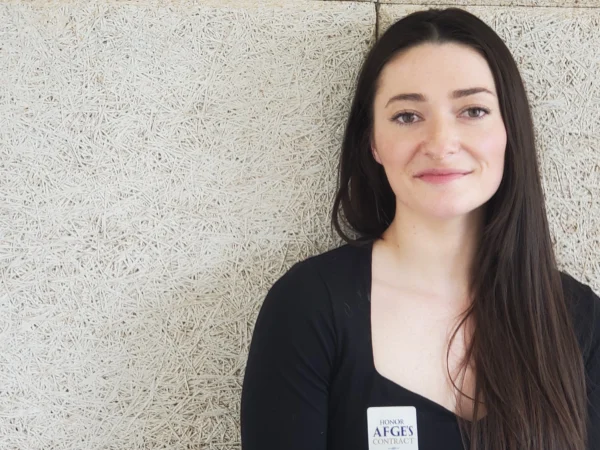
Change is happening since Donald Trump took office and began making good on campaign pledges to reduce the size and scope of the work of the federal agencies that serve the country.
And the 50-year-old focus of the U.S. EPA to protect the environment has not been immune. It is undergoing a dramatic priority shift best illustrated by the agency’s new initiative, “Powering the Great American Comeback” announced by Administrator Lee Zeldin in February.
The initiative consists of five “pillars,” but only one talks about environmental protection. The remaining four read more like an economic development plan and focus on topics like energy dominance, advancing artificial intelligence and bringing back American auto jobs.
Since February, the administration has talked about staff reductions and Administrator Zeldin explained spending reductions of 65%. Additionally, there was speculation that the number of regional offices would be reduced from 10 to four.
Jeremy Symons was a climate policy adviser at the EPA from 1994-2001 and he says, writing on Substack, that “what is happening today is far more dangerous than past attempts by new administrations to rebalance EPA priorities.”
He cited the administration of George W. Bush who, Symons said, “took their agenda to Congress and sought changes, “ some were enacted and some were not.”
Symons said the Bush EPA under administrator Christine Todd Whitman enforced laws and levied fines on corporate polluters.
“Zeldin, in contrast, is attempting to unilaterally circumvent Congress,” Symons said.
Symons is a senior adviser at the Environmental Protection Network, an organization of former EPA staff and political appointees.
Great Lakes Now asked the EPA to clarify its position on a potential reduction in the number of regional offices. The agency’s press office did not respond directly saying “as of March 31, eight regional administrators have been onboarded at EPA.” The EPA website lists Region 5 in Chicago that covers the Great Lakes states as still having an acting administrator.
The spokesperson said jobs eliminated to date are in DEI and environmental justice.
Great Lakes Now asked Region 5 if any staff cuts had taken place or were anticipated in the areas of science, law or enforcement. A spokesperson deferred to the statement from the EPA’s HQ office.
Specific to the Great Lakes office in Chicago, the spokesperson said there have been no changes to the management team and work continues to advance its mission on the U.S.–Canada border.
On April 1, The New York Times reported on 560 confirmed reductions at EPA with an additional 1,150 planned, totalling 10% of the staff.
To better understand the role and importance of the regional EPA offices, Great Lakes Now contacted two veteran executives who have focused on the Great Lakes.
Wisconsin native David Ullrich served as deputy regional director at the Region 5 Great Lakes office from 1992 to 2003. He then spent 14 years as executive director of the Great Lakes St. Lawrence Cities Initiative, a U.S. and Canada organization of mayors.
Central Michigan University Professor Don Uzarski is the Founding Director of the Institute for Great Lakes Research at the university and has had a long interface with the EPA’s Great Lakes office in Chicago.
Proximity and culture
“The primary value of EPA regional offices is that they bring the people responsible for implementing environmental and public health protection laws and regulations much closer to the people and resources the laws are designed to protect,” Ullrich told Great Lakes Now.
Justifying the number of regional offices, Ullrich pointed out the “vast differences” and environmental needs that exist between, for example, the water rich Great Lakes region, the New England coast and the desert southwest.
And it’s about more than the environment according to Ullrich.
“The cultures in the areas are significantly different, as well, and people in regional offices are in a much better position to understand those differences than those in Washington,” Ullrich said.
As a scientist who oversees a multi-million dollar, bi-national coastal wetland program sponsored by the EPA, Uzarski says the support of the Great Lakes regional office has been “critical” to its success.
“Much of the science was made possible by the professionals and scientists” at the Great Lakes office in Chicago, Uzarski said, adding that staff is “on the ground in the region and know the issues so they know what to focus on.”
Uzarski also gave credit to the EPA for adapting to the emerging Great Lakes science.
“Great Lakes science has exponentially evolved over the last 30 years and the EPA’s Great Lakes office is responsible for a large part of that,” Uzarski said.
On pending staff reductions at EPA, Ullrich did not mention Trump adviser Elon Musk’s now notorious chainsaw approach, but he cautioned against arbitrary reductions that have no relation to effectiveness or efficiency.
“Random budget and staffing cuts could result in major setbacks to the progress made over the past 50 years of public health and environmental protection,” Ullrich said.
Michigan’s Department of Environment, Great Lakes, and Energy interfaces with the EPA’s Region 5 office on Great Lakes programs. Communications director Dale George provided a statement on the potential of staff and funding cuts at EPA that could affect Michigan.
“As we continue to monitor the situation at the federal level, it will be imperative that EPA continue to fund state programs that ensure the environment and public health remain protected,” George said.
Critical collaboration
Both Ullrich and Uzarski have had significant interaction with Canadian entities over the years as protection of the Great Lakes is a shared responsibility.
In recent tension between the U.S. and Canada, President Trump mentioned the possibility of “tearing up” agreements between the countries related to the lakes and transboundary waters.
Great Lakes Now asked Ullrich and Uzarski to comment on the importance of the relationship between the countries.
Central Michigan’s Uzarski said the current collaborative relationship is critical.
“The structure and functions of the lakes don’t have political boundaries. If one country dumps toxicants into the water, the citizens of the other country are exposed to them,” Uzarski said.
Ullrich emphasized the importance of a close relationship between the two countries and added, “anything that undermines this working relationship presents a serious threat to millions of people on both sides of the border.”
Catch more news at Great Lakes Now:
Trump threatens Great Lakes agreements between U.S. and Canada
Featured image: Don Uzarski, Lake Michigan off Beaver Island. (Photo Credit: Central Michigan University Communications)




